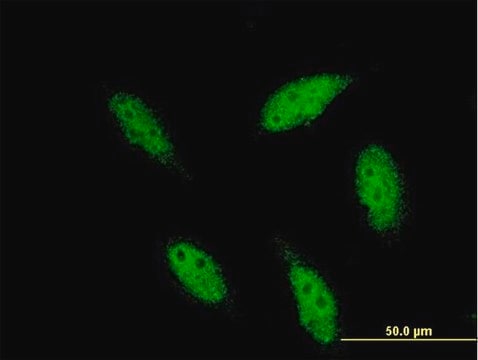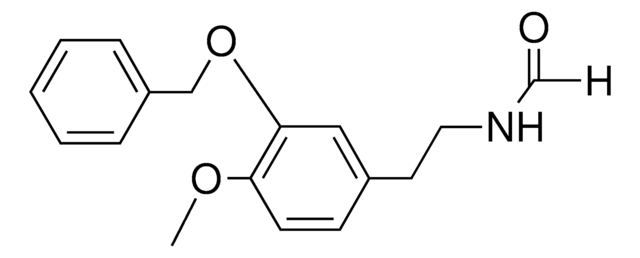MAB329
Anti-Synaptophysin Antibody, clone SP15
ascites fluid, clone SP15, Chemicon®
Sinónimos:
Major Synaptic Vesicle Protein p38
About This Item
Productos recomendados
origen biológico
mouse
Nivel de calidad
forma del anticuerpo
ascites fluid
tipo de anticuerpo
primary antibodies
clon
SP15, monoclonal
reactividad de especies
pig, rat, hamster, human
fabricante / nombre comercial
Chemicon®
técnicas
ELISA: suitable
immunohistochemistry: suitable (paraffin)
western blot: suitable
isotipo
IgM
Nº de acceso NCBI
Nº de acceso UniProt
Condiciones de envío
dry ice
modificación del objetivo postraduccional
unmodified
Información sobre el gen
human ... SYP(6855)
Especificidad
Inmunógeno
Aplicación
Formalin fixed (fixed <4 weeks), paraffin embedded
Frozen
4% Paraformaldehyde
Western blotting at 1:2,500-1:10,000.
ELISA at 1:500
Optimal working dilutions must be determined by the end user.
Neuroscience
Synapse & Synaptic Biology
Ligadura / enlace
Forma física
Almacenamiento y estabilidad
Información legal
Cláusula de descargo de responsabilidad
Not finding the right product?
Try our Herramienta de selección de productos.
Opcional
Código de clase de almacenamiento
10 - Combustible liquids
Clase de riesgo para el agua (WGK)
WGK 1
Punto de inflamabilidad (°F)
Not applicable
Punto de inflamabilidad (°C)
Not applicable
Certificados de análisis (COA)
Busque Certificados de análisis (COA) introduciendo el número de lote del producto. Los números de lote se encuentran en la etiqueta del producto después de las palabras «Lot» o «Batch»
¿Ya tiene este producto?
Encuentre la documentación para los productos que ha comprado recientemente en la Biblioteca de documentos.
Los clientes también vieron
Nuestro equipo de científicos tiene experiencia en todas las áreas de investigación: Ciencias de la vida, Ciencia de los materiales, Síntesis química, Cromatografía, Analítica y muchas otras.
Póngase en contacto con el Servicio técnico












